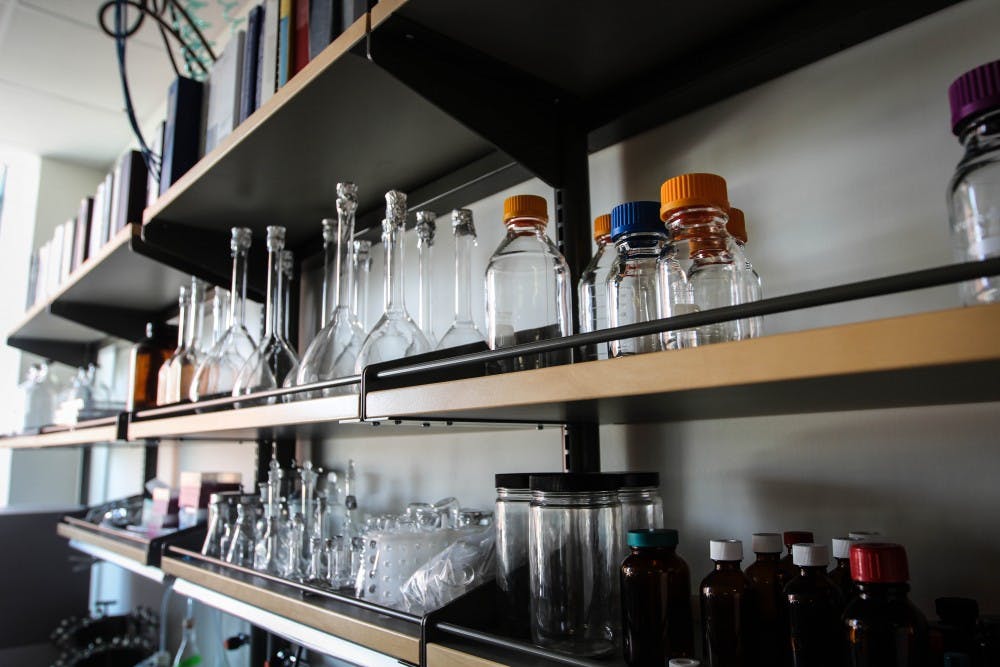Rats and cocaine may sound like two ingredients for a bad trip, but at ASU, they're being used to research a possible treatment for drug addiction.
Human treatment is a long way off, said Ryan Bastle, the neuroscience graduate student behind the research.
"It might provide some novel targets for therapy in the future if there's a way to regulate genes with drugs," Bastle said.
His research focuses on microRNAs, molecules that regulate gene expression. Bastle found that levels of one particular microRNA molecule seemed to be regulated by exposure to cocaine. In animals that display addiction, the levels of this microRNA molecule are lower.
Bastle has been experimenting with rodents that are given access to the drug. The animals can dispense cocaine themselves, but they're set up on a schedule that requires them to make more of an effort for subsequent doses.
Getting its infusion of cocaine would require the animal to press a lever once, while it would have to press twice for the next one and so on, requiring them to work harder each time.
Having the drug be self-administered parallels human usage, said Bastle's adviser, School of Life Sciences professor Janet Neisewander.
"They're behaving very much like human drug abusers in that they're voluntarily choosing to use it," she said.
The research team injects an experimental group of the rodents with a virus that causes their levels of the microRNA molecule connected to cocaine exposure to rise.
The rats with the altered microRNA levels tend to reach their limit of how many times they would press a lever for a cocaine infusion faster than the rodents with normal microRNA levels.
"We think it decreases the motivation for the drug," Neisewander said.
Scientists have long known that chronic use of drugs will change a substance abuser's brain chemistry, but Bastle's research relies on the relatively newly discovered microRNA. Since they were described in the early 2000s, microRNA molecules have been examined in relation to cancer development and drug addiction.
At ASU, Neisewander's lab focuses on understanding the complexities of drug abuse.
"Our research is at the basic science level where we're just trying to figure out how the drugs change the brain and what molecules are involved in the miswiring associated with drug addiction," she said.
It's difficult research, which appeals to Bastle.
"I love complex problems that are hard to solve, and addiction's one of them," he said. "It stays interesting."
Bastle hasn't personally been close to anyone who suffers from any form of drug addiction, but he said the complexity of addiction keeps him intrigued in his research.
After graduating from the University of Minnesota at Duluth, he chose to pursue his doctorate studies at ASU largely because of the lab. He's worked in Neisewander's lab since 2009.
Over the past four years of working together, Bastle seems more like a colleague than a student, Neisewander said.
"He's wonderful," she said. "He's naturally inquisitive and hardworking and knows the logical steps to take to answer the questions he sets out to answer. On a personal level, he's delightful to work with and is a very good scientific citizen in that he'll help others in the lab."
Bastle recently returned from Dublin, Ireland, where he presented his research to a conference of behavioral neuroscientists. Hearing from other scientists around the world who were working on similar research was inspiring, he said.
While his research so far only studies cocaine, he said it would be interesting to test other drugs, such as heroin, to see what similarities exist.
"It's hard to tell where it will go," he said. "This is just the precursor."
Reach the managing editor at julia.shumway@asu.edu or follow @JMShumway on Twitter.
Like The State Press on Facebook and follow @statepress on Twitter.




